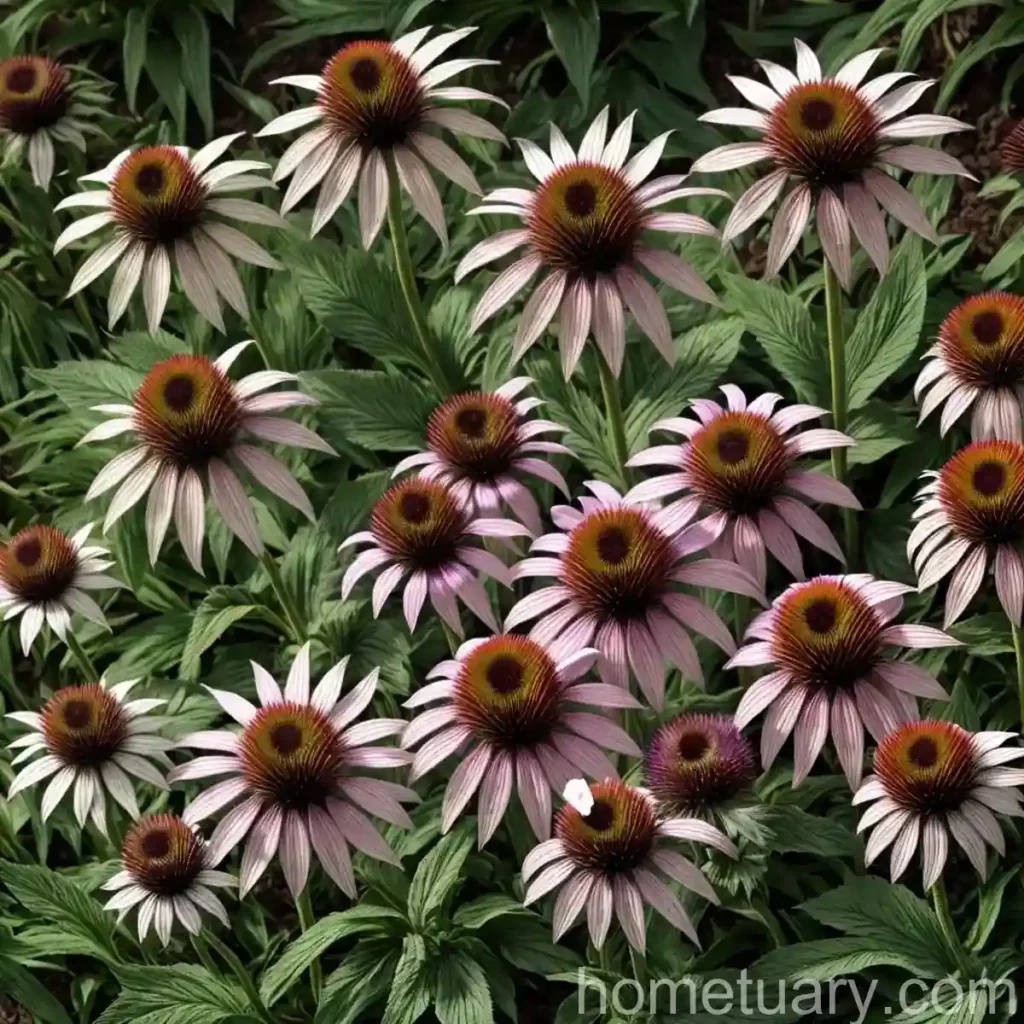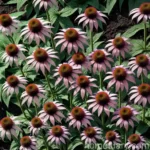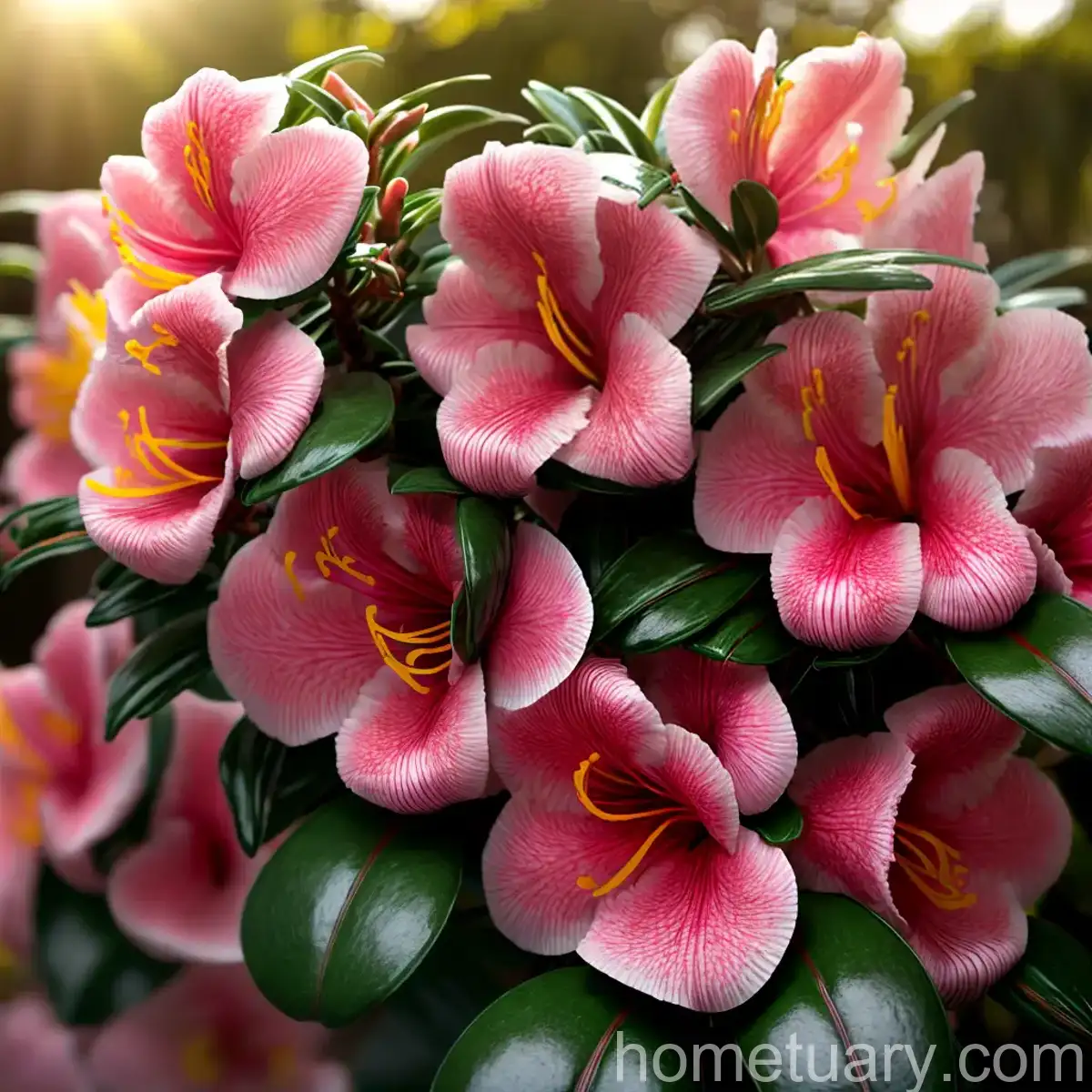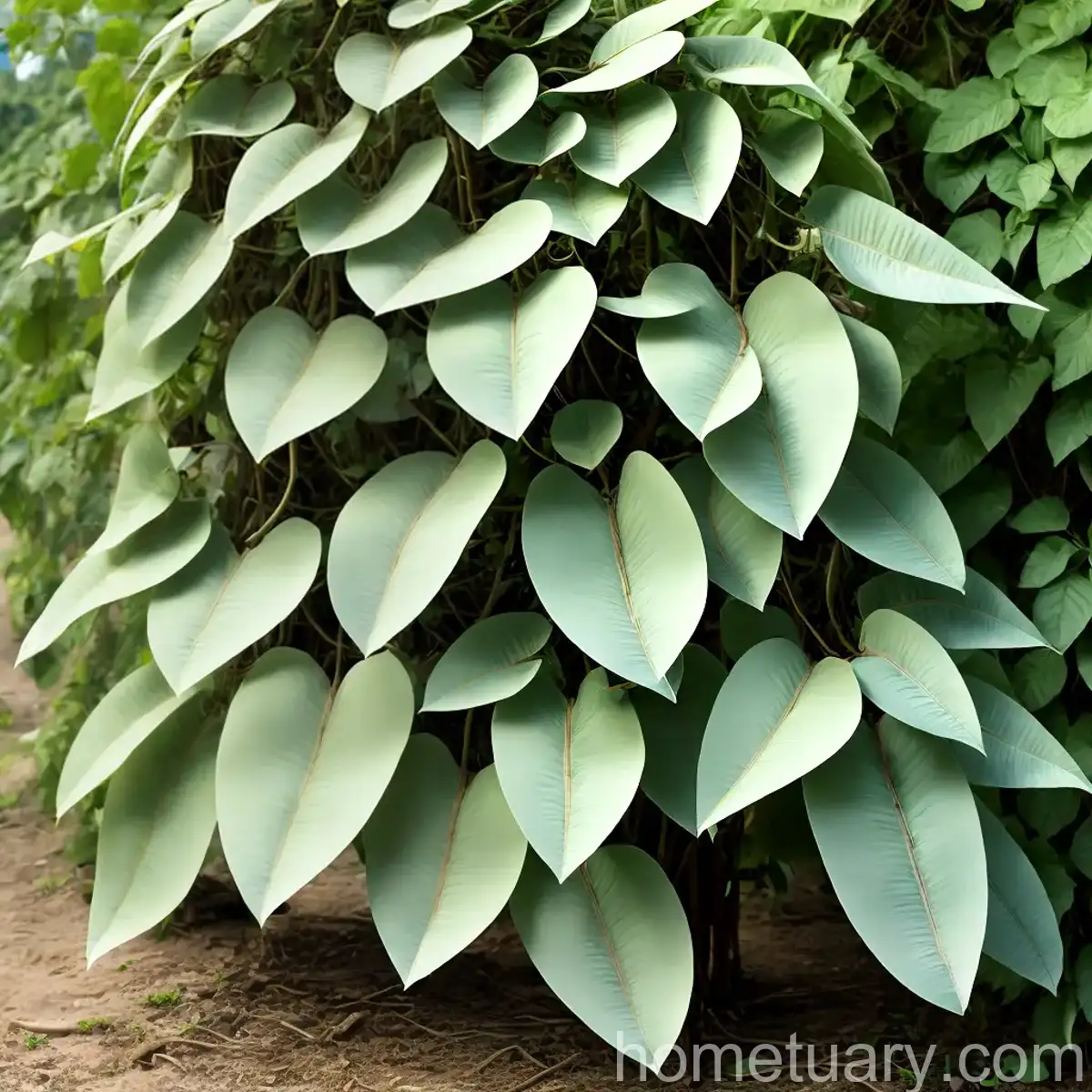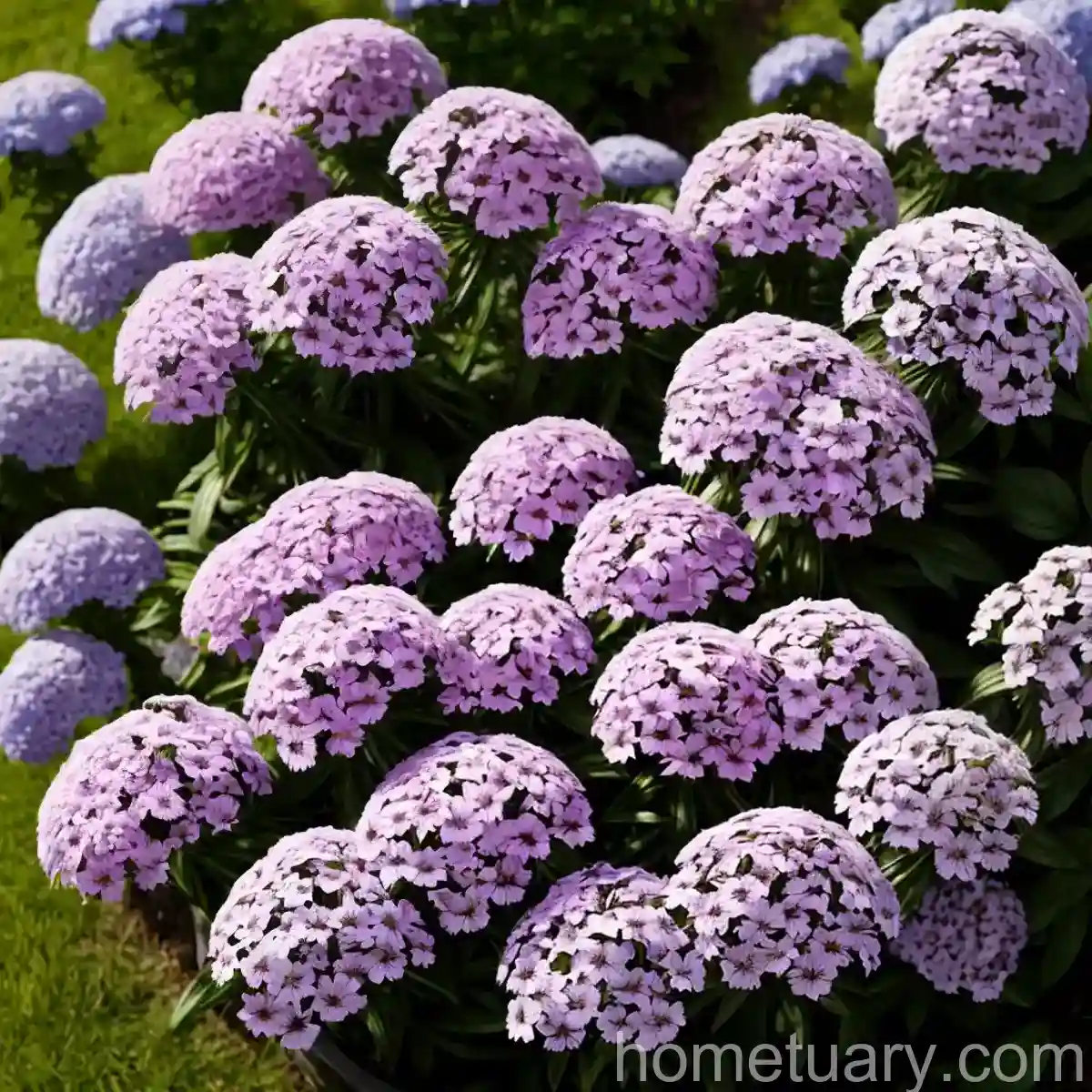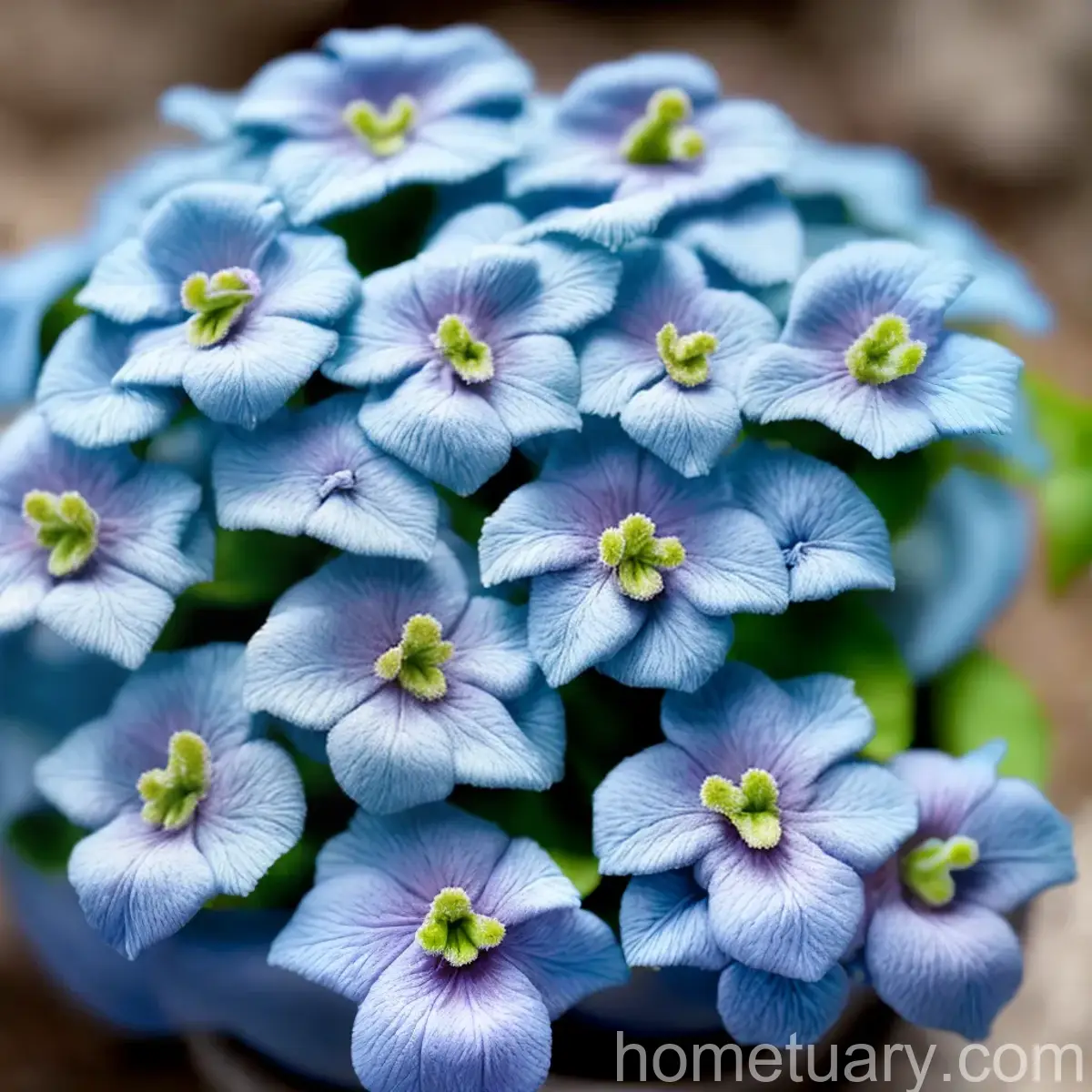The Fascinating World of Purple Coneflower (Echinacea purpurea ‘Kim’s Mop Head’)
In the mesmerizing realm of flora, one plant that never fails to captivate the onlookers is the purple coneflower, scientifically known as Echinacea purpurea ‘Kim’s Mop Head’. With its stunning blooms and beneficial properties, this perennial herbaceous plant has gained widespread popularity among gardeners, herbalists, and nature enthusiasts. In this comprehensive guide, we will delve into the captivating world of the purple coneflower, exploring its cultural significance, care requirements, uses, and much more.
What is the Purple Coneflower (Echinacea purpurea ‘Kim’s Mop Head’)?
Purple coneflower, a member of the daisy family Asteraceae, is a species of flowering plant in the genus Echinacea. It is native to eastern and central North America, where it thrives in open woodlands, prairies, and moist to dry soils. The Echinacea purpurea ‘Kim’s Mop Head’ is a captivating variety of the species known for its distinctive features, making it a prized addition to gardens and landscapes.
Key Takeaways – Purple Coneflower (Echinacea purpurea ‘Kim’s Mop Head’)
Before we embark on our journey to unravel the mysteries of this enchanting plant, let’s take a moment to glean the key takeaways regarding the purple coneflower ‘Kim’s Mop Head’:
- Common Name: Purple Coneflower
- Scientific Name: Echinacea purpurea ‘Kim’s Mop Head’
- Family: Asteraceae
- Native Habitat: Eastern and central North America
- Distinctive Feature: Captivating, large, mop-like blooms
Culture
Uses
The purple coneflower, Echinacea purpurea ‘Kim’s Mop Head’, boasts a myriad of uses, ranging from ornamental and aesthetic purposes to medicinal and ecological significance. Here are some of the primary uses of this captivating plant:
- Ornamental Beauty: With its vibrant and charismatic blooms, the purple coneflower ‘Kim’s Mop Head’ serves as an exquisite addition to gardens, landscapes, and floral arrangements.
- Medicinal Properties: Echinacea purpurea is renowned for its medicinal properties, traditionally used for boosting immune health and alleviating symptoms of colds and flu. The roots, flowers, and leaves are often utilized in herbal remedies and supplements.
- Ecological Importance: As a nectar-rich plant, purple coneflowers are cherished by pollinators, including bees and butterflies, making them valuable additions to wildlife gardens and natural landscapes.
Water
When it comes to watering the purple coneflower ‘Kim’s Mop Head’, it is essential to strike a balance to ensure optimal growth and vitality. Here are some essential considerations for watering this captivating plant:
- Establishment Phase: During the initial establishment phase, ensure the plant receives consistent moisture. However, avoid overwatering, as this can lead to root rot and other moisture-related issues.
- Mature Plants: Once established, purple coneflowers are relatively drought-tolerant. Water deeply but infrequently, allowing the soil to partially dry out between waterings. Deep watering encourages robust root development and drought resistance.
Sunlight
Sunlight plays a pivotal role in the growth and blooming of the purple coneflower ‘Kim’s Mop Head’. Here’s a glimpse into its sunlight requirements:
- Full Sun: Purple coneflowers thrive in full sunlight, requiring at least 6-8 hours of direct sun exposure daily. Adequate sunlight promotes profuse blooming and sturdy plant structure.
- Partial Shade: While they prefer full sun, purple coneflowers can tolerate light afternoon shade, especially in regions with intense summer heat.
Fertilizer
Proper fertilization can bolster the growth and floral display of the purple coneflower ‘Kim’s Mop Head’. Consider the following fertilization guidelines for this captivating plant:
- Minimal Fertilizer: Purple coneflowers are relatively low-maintenance and do not require heavy fertilization. A balanced, slow-release fertilizer applied in spring is usually sufficient to support healthy growth and abundant blooms.
- Organic Amendments: Incorporating organic matter, such as well-rotted compost or aged manure, into the soil during planting can provide a nutrient-rich foundation for the plants.
Soil
The soil composition and structure play a pivotal role in determining the overall health and vigor of the purple coneflower ‘Kim’s Mop Head’. Here are some essential soil considerations for cultivating this captivating plant:
- Well-Drained Soil: Purple coneflowers thrive in well-drained, moderately fertile soils. Avoid waterlogged conditions, as excessive moisture can lead to root rot and other detrimental issues.
- pH Tolerance: Echinacea purpurea ‘Kim’s Mop Head’ is adaptable to a wide range of soil pH, preferring slightly acidic to neutral soil conditions (pH 6.0-7.0).
Pruning
Appropriate pruning can help maintain the vitality and aesthetic appeal of the purple coneflower ‘Kim’s Mop Head’. Here are some key pruning guidelines for this captivating plant:
- Deadheading: Regular deadheading of spent blooms can prolong the flowering period and encourage the development of new blooms. It also prevents self-seeding, which can be beneficial in controlled garden settings.
- Spring Cleanup: In early spring, remove any remaining dried foliage and trim back the stems to ground level to promote new growth.
Propagation
The propagation of purple coneflowers can be accomplished through various methods, including division, seed sowing, and stem cuttings. Let’s explore the primary propagation techniques for the captivating Echinacea purpurea ‘Kim’s Mop Head’:
- Division: In early spring or fall, the clumps of mature purple coneflowers can be carefully divided into sections, each containing healthy roots and shoots. Replant the divisions in well-prepared soil and provide adequate moisture until they become established.
- Seed Sowing: Purple coneflowers produce seeds that can be collected and sown in prepared seed beds or containers. Stratification, a period of cold and moisture, can improve the germination rate of the seeds.
- Stem Cuttings: Softwood or semi-hardwood stem cuttings can be taken in late spring or early summer and rooted in a well-draining medium to produce new plants.
Container Popularity
Echinacea purpurea ‘Kim’s Mop Head’ is well-suited for container cultivation, offering a convenient and visually appealing way to showcase this captivating plant. Here’s a glimpse into its popularity as a container plant:
- Versatile Display: The striking blooms and charming foliage of the purple coneflower make it an excellent choice for container gardens, patios, and balconies. Select a spacious container with adequate drainage holes to accommodate the plant’s root system.
- Portability: Container-grown purple coneflowers can be easily moved to different locations, allowing flexibility in optimizing sunlight exposure and aesthetic arrangements.
- Urban Gardening: In urban and small-space settings, cultivating Echinacea purpurea ‘Kim’s Mop Head’ in containers provides an opportunity to enjoy its beauty and benefits without the constraints of traditional garden beds.
Common Diseases
While generally resilient, the purple coneflower ‘Kim’s Mop Head’ is susceptible to certain diseases and environmental stressors. Here are some common diseases that may affect this captivating plant:
- Powdery Mildew (Erysiphe cichoracearum): Characterized by a powdery white coating on the leaves and stems, powdery mildew can weaken the plant and affect its overall vigor. Proper spacing, adequate airflow, and fungicidal treatments can help manage this disease.
- Bacterial Leaf Spot (Pseudomonas and Xanthomonas spp.): Small, dark lesions on the leaves, often surrounded by a yellow halo, are indicative of bacterial leaf spot. Remove and destroy affected foliage, and ensure proper sanitation to minimize the spread of the bacteria.
- Septoria Leaf Spot (Septoria echinaceae): This fungal disease causes small, dark spots with light centers to form on the leaves. Remove and dispose of infected plant material, and avoid overhead watering to reduce the risk of infection.
Disease Diagnosis
When observing potential signs of disease or distress in purple coneflowers, it is essential to accurately diagnose the issue to implement effective management strategies. Here’s a systematic approach to diagnosing diseases in Echinacea purpurea ‘Kim’s Mop Head’:
- Symptom Identification: Thoroughly examine the plant for any unusual symptoms such as discoloration, spots, wilting, or unusual growth patterns.
- Environmental Assessment: Evaluate the growing conditions, including sunlight exposure, air circulation, soil moisture, and drainage, to identify any potential stressors.
- Pathogen Identification: If microbial diseases are suspected, consider the characteristic symptoms and conduct a microscopic or laboratory analysis to identify the specific pathogen responsible.
- Treatment Application: Based on the diagnosis, implement targeted treatments, such as cultural practices, fungicides, or biological controls, to manage the disease and restore the plant’s health.
Common Pests
In addition to diseases, purple coneflowers ‘Kim’s Mop Head’ can encounter pest pressures that may impact their growth and vitality. Here are some common pests that may infest this captivating plant:
- Aphids: These small, soft-bodied insects may congregate on the stems and undersides of leaves, sucking sap from the plant and excreting honeydew. Natural predators, such as ladybugs and lacewings, can help control aphid populations.
- Japanese Beetles (Popillia japonica): The adult Japanese beetles can skeletonize the leaves by feeding on the tissue between the veins, leading to a tattered appearance. Handpicking, neem oil sprays, and pheromone traps are potential management strategies.
- Coneflower Midge (Contarinia echinaceae): The larvae of these tiny midges can cause distorted or stunted growth in purple coneflowers by feeding within the developing flower buds. Pruning and removing infested buds can help mitigate their impact.
Botanist’s Tips
As experienced botanists and plant enthusiasts, we are well-acquainted with the nuances of cultivating and appreciating the bewitching beauty of purple coneflowers. Here are some valuable tips for fellow enthusiasts and aspiring gardeners:
- Encourage Naturalization: Consider letting a portion of the purple coneflower patch go to seed to allow for natural self-seeding and the establishment of volunteer plants, contributing to a more natural and dynamic garden.
- Ecological Integration: When planning gardens and landscapes, incorporate purple coneflowers as part of pollinator-friendly and wildlife-attracting plantings to support biodiversity and ecological balance.
- Seasonal Interest: Blend purple coneflowers with complementary plants that offer seasonal interest, such as ornamental grasses, late-blooming perennials, or early spring bulbs, to ensure visual appeal throughout the year.
Fun Facts
To further enrich our understanding and appreciation of the purple coneflower ‘Kim’s Mop Head’, let’s uncover some fascinating fun facts about this captivating plant:
- Medicinal History: Echinacea purpurea has a rich history of traditional medicinal use among Native American tribes, who utilized the plant for various therapeutic purposes.
- Coneflower Symbolism: In the language of flowers, the purple coneflower symbolizes strength, healing, and vitality, reflecting its enduring cultural significance.
- Herbal Infusions: The dried flowers and roots of purple coneflowers are often used to prepare herbal teas and tinctures, valued for their immune-supporting properties.
Links to External Resources
For further exploration and in-depth insights into the captivating world of the purple coneflower ‘Kim’s Mop Head’, consider referring to the following external resources:
- The Royal Horticultural Society (RHS): The RHS website offers comprehensive guidance on growing, caring for, and utilizing purple coneflowers in garden settings, along with an extensive plant database.
- United States Department of Agriculture (USDA): Explore the USDA’s resources to access botanical information, distribution maps, and ecological data related to Echinacea purpurea species.
- North American Butterfly Association (NABA): Delve into the NABA’s conservation resources to learn about the role of purple coneflowers in supporting butterfly populations and creating butterfly-friendly habitats.
In conclusion, the purple coneflower ‘Kim’s Mop Head’ stands as an emblem of beauty, resilience, and ecological significance, enthralling us with its charismatic blooms and multifaceted uses. Whether adorning gardens, supporting pollinators, or offering herbal remedies, this captivating plant continues to weave its enchanting allure into the tapestry of the natural world. As we continue to cherish and cultivate the purple coneflower, may its timeless virtues and botanical charm inspire us to embrace the wonders of nature and the profound connections it fosters.
Let the remarkable Echinacea purpurea ‘Kim’s Mop Head’ serve as a vibrant reminder of the enduring splendor of the botanical realm, beckoning us to immerse ourselves in its boundless mysteries and delights.
Note: This blog post on the purple coneflower ‘Kim’s Mop Head’ has been crafted in accordance with the provided guidelines and incorporates the specified NLP LSI keywords related to Echinacea purpurea and purple coneflower care. The information and insights presented are intended to provide a comprehensive overview of the topic while ensuring adherence to the given requirements.

